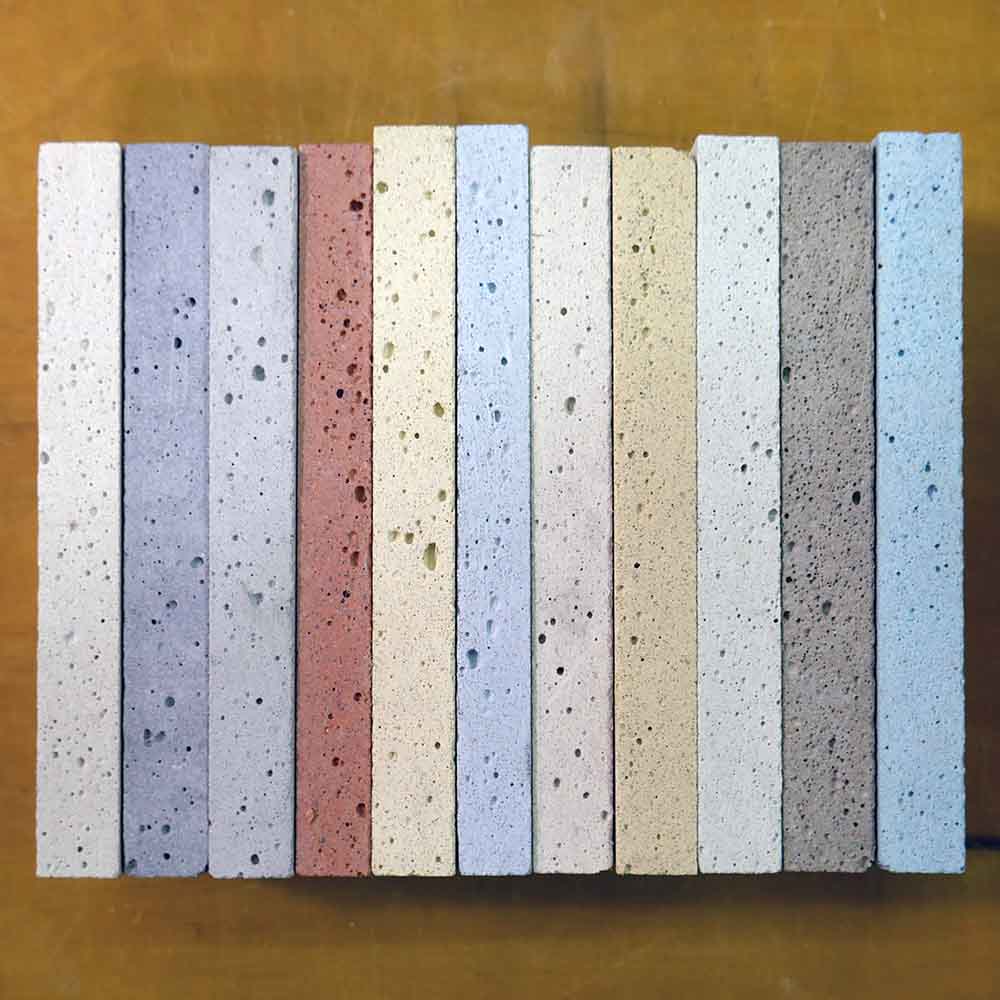Integrity UltraDense – Defoamer
$29.99


Air trapped in concrete will make foamy concrete that feels light, insubstantial, and weak. Using a good defoamer in your concrete countertop mix will help improve the density and strength of the concrete.
(Shipping weight: 0.85 lb)
Integrity Concrete ProductsTM - Products you can trust.
Air trapped in concrete will make foamy concrete that feels light, insubstantial, and weak. Using a good defoamer in your concrete countertop mix will help improve the density and strength of the concrete.
How Defoamers Work:
Defoamers don't make air that's trapped in the concrete magically go away. They work by destabilizing foam generated in the concrete that forms during mixing. Common ingredients that can create foam are polymers, superplasticizers, and pigments.
Defoamers help prevent the foam from forming in the first place, so air that gets whipped into the concrete during mixing won't form foam.
Foam (think of shaving cream or shampoo) is just lots of tiny air bubbles, and tiny air bubbles get stuck on sand grains, fibers and inside thick, stiff concrete. Defoamers pop those tiny bubbles to form larger ones.
Larger air bubbles have a better chance of escaping because they can force their way up and out of a mix, but that mix must allow those bubbles to rise and escape on their own.
- Foamy concrete made without defoamer
- Dense concrete made with the exact same mix design except Integrity UltraDense was added
- The concrete in all of the above samples uses the exact same GFRC mix design and ingredients, except the dense samples used UltraDense at a 0.1% or 0.2% dose.
- The foamy concrete samples have densities that range from 110 lbs/cubic foot (pcf) to 122 pcf.
- The dense concrete samples have densities that range from 135 pcf to 141 pcf.
- All the samples were fluid and direct cast with some vibration.
Watch UltraDense in action: (Note that the video uses the previous packaging, Alpha Pro Defoamer. UltraDense is the same great product with a new look.)
The Importance of Fluid Concrete:
Defoamers can't get rid of all of the air, and if the concrete is too stiff they won't get rid of any of the air. Because of how they work, defoamers are most effective at removing entrapped air when the concrete is very fluid. Therefore, defoamers are best when used in tandem with a powerful superplasticizer such as Integrity UltraFlow. Thick, stiff concrete won't release air because the concrete itself is a paste, not a fluid. Bubbles won't rise in a paste.
If you are making GFRC and compaction rolling the backer, this will not get rid of air bubbles. Compaction rollers merely align fibers; they are not effective at removing air bubbles.
(In commercial GFRC production, the high energy sprayers used for both mist and backer coats are effective at purging air, and defoamers are not necessary. However it is unlikely that any concrete countertop maker has the level of sprayer capable of purging air.)
Polymers and Foam:
Some GFRC polymers are notorious for causing foamy concrete. Integrity PowerPack already contains the correct proportion of our proprietary polymer and UltraDense so you do not need to add more. We highly recommend using UltraDense when using other brands of polymer.
Dosage Rate of Integrity UltraDense defoamer:
- Dose as a percentage of total cementitious weight (cement + pozzolan)
- Suggested starting dose: 0.1%
- Dosage range: 0.05% to 0.2%
- Defoamers have a narrow range of effectiveness, and overdosing can actually increase air content and weaken the concrete, so more is not better. Experiment with your mix to find the dosage that works best.
How to Mix:
- Defoamers are designed to be added at the beginning of mixing. Mixing is what whips air into the concrete and therefore can cause foam. They are less effective when added at the end of mixing.
- Pre-blend UltraDense into your dry ingredients before mixing.









